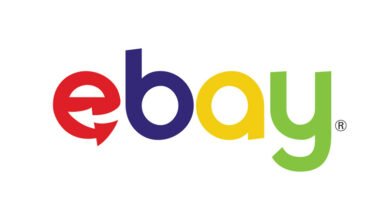USCIS Translation Rules: A Simple, Stress-Free Guide

Filling out U.S. immigration forms is a big job. It requires attention to the smallest details, from dates and addresses to personal history; however, handling documents that are not in English can cause the greatest confusion and unnecessary stress.
All documents submitted to the United States Citizenship and Immigration Services (USCIS) must be in English or accompanied by a certified English translation. This is one of the most common reasons for application delays when not performed correctly. You may receive a free request for evidence (RFE), putting the grant of your application on hold for months, or perhaps, in the worst-case scenario, outright denial.
Think of this guide as your easiest manual for understanding the translation rules. We clear the fog and map out simple steps of what you really need to do. Ultimately, this should allow you to perfect the application on the first go, saving you time, money, and worry.
What is a Certified Translation? (It’s Simpler Than You Think)
When they hear the word “certified,” many people imagine that the translator needs a distinct license from the government, or perhaps has to have the job notarized.” For purposes of USCIS, this is not true. The rules are actually somewhat straightforward.
Hence, for a certified translation by USCIS, we really just need to have two things:
- The Full Translation: A complete, word-for-word English version of your original document. This consists of every text in the original document: the content itself, titles, stamps, seals, signatures, and handwritten notes in the margins. Nothing must be omitted.
- The Certificate of Accuracy: This is a separate document or statement from the translator, promising that the translation is complete and accurate.
A notary is not always required. In most cases, just the translator’s signature on the Certificate of Accuracy is enough for USCIS acceptance. The three key elements are important in this certification, which we will discuss next.
The 3 Non-Negotiable Parts of a USCIS Translation Certificate
Now this is the key section. The document will be rejected if the translator omits any of these three in his or her translation. The translator has to provide a declaration to the effect that:
- I am qualified to translate. The translator must simply declare that he or she is conversant in the original language and English. A straightforward, “I hereby certify that I am qualified to translate from [e.g., Arabic] into English” would suffice.
- This translation is accurate and complete. That is the translator’s guarantee. He or she is swearing by signing his or her name on the line that, in his or her honor, the English translation is an accurate and complete translation of the original. Usually, the guarantee states, “I further certify that the attached document is a true and accurate translation of the original document provided.”
- The translator’s signature, name, and date. This makes the certification official and holds the translator accountable for it.
That is it. Nothing official or preprinted. It is just a paragraph with those three components and the translator’s signature.
Who Can Translate Your Documents for USCIS?
USCIS rules are flexible about who can translate your documents. The policy states that the translator can be anyone, as long as they are competent in both languages and provide the complete certification described above.
That is to say:
- A Certified Translation Company: This is the most trusted way. Companies like Connected Translation specialize in document translation services for USCIS. They use experts who understand legal and official terminology. They guarantee the format and certification are 100% correct and provide a professional product that gives you peace of mind.
- A Friend or Family Member: A bilingual friend or relative could technically do the translation. But then, it is a bit of a gamble. Perhaps, there could be a simple typo, an incorrect legal term, or a part of the certification might be omitted. Such an error will be viewed as your fault, and your file will be delayed. In addition, it places undue strain on your personal relationship.
- Self: You cannot translate your documents if you are bilingual. It is considered a conflict of interest; an independent third party must certify that the translation is accurate.
Your USCIS Translation Checklist: Get It Right the First Time
Here comes a simple checklist to go by before the submission of any translated document.
For Each Document:
- The Original: A clear, legible copy of the original document in the foreign language is available.
- The Translation: Every word, number, stamp, seal, and signature from the original has been included in the English version.
- The Certification: The translation has a separate certification statement attached.
- Competency: Said certificate acknowledges that the translator is competent.
- Accuracy: The certificate also states that the translation is true and accurate.
- Signed and dated: The certificate contains both the translator’s signature and name in print, alongside the translation date.
- Compilation: The original document is paper-clipped or stapled to the translation, comprising a single set.
Submitting with Confidence
The U.S. immigration process is a marathon, not a sprint. All parts of your application must be solid. Your documents are your evidence and proof of your claim. If translated ideally, they will communicate your story clearly and accurately to the USCIS officer, and he/she will then be able to assess the merits of your application without being diverted by glaring mistakes.
Cutting corners in translations is a recipe for disaster. Surely paying for a professional service costs a fraction of what it would cost to have your application rejected or stymied for months. By going with a dedicated service, you are going with certainty. You will decide to remove one huge weight from your shoulders and start constructing a solid rock application.
Why Choose Connected Translation
Connected Translation is the ideal partner when you care about having your translations done correctly. We specialize in impeccable document translation services for USCIS, where every detail, right down to certification, must reach the highest level of scrutiny. Our expert translators are acutely aware of the high stakes involved in every immigration case and work to deliver you accuracy, reliability, and peace of mind.









